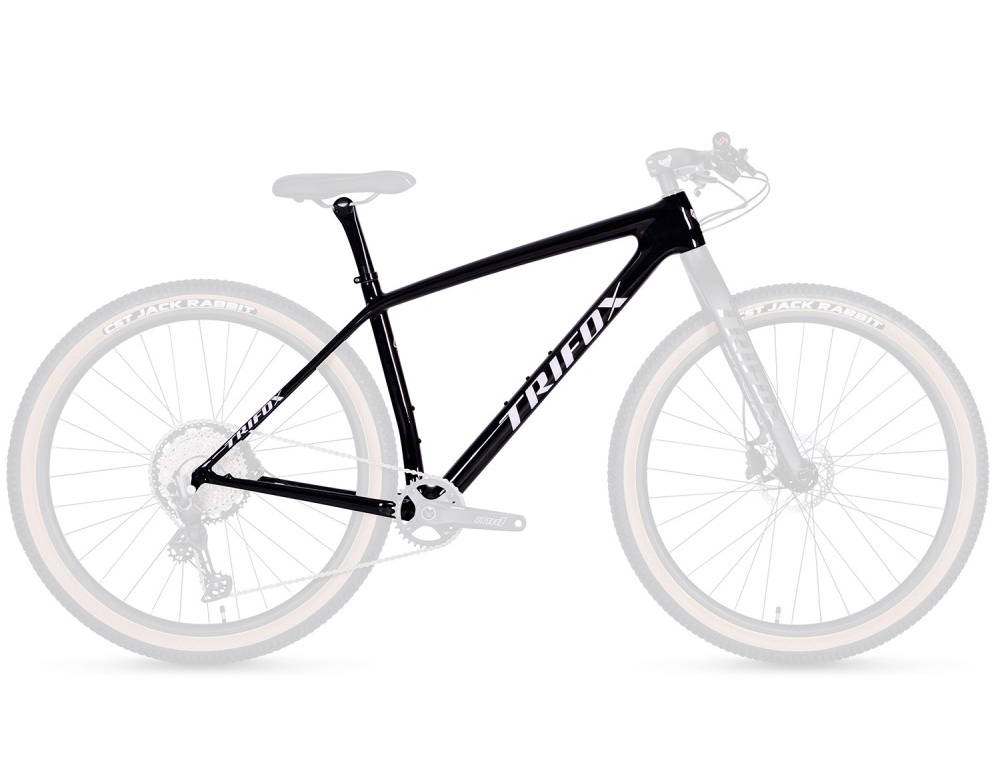
For serious cyclists, every component of the bike matters. From tires to suspension, each part plays a critical role in performance. Among the many features that can enhance a cyclist’s experience, the frame stands out as one of the most important. Ultra-light frames, particularly those made from advanced materials like carbon fiber, have gained popularity in recent years for a reason: they significantly improve overall ride performance. But what exactly makes ultra-light frames the ultimate choice for serious cyclists? 1. Increased Speed and Acceleration One of the most immediate benefits of an ultra-light frame is the improvement in speed and acceleration. Cyclists know that lighter bikes are easier to handle and more responsive, especially when climbing steep hills or sprinting on flat terrain. The less weight you need to move, the faster and more efficiently your bike will perform. The Trifox Lightweight Carbon MTB Hardtail Frame BOOST SDY20 is a perfect example of a frame that prioritizes lightness without sacrificing strength or durability. Its carbon fiber construction provides an impressive reduction in weight compared to traditional aluminum or steel frames. For serious cyclists, this means quicker acceleration out of turns, less effort when pedaling uphill, and an overall increase in riding speed. 2. Improved Handling and Maneuverability Ultra-light frames also significantly enhance a bike’s handling and maneuverability. A lighter frame allows for quicker changes in direction and better control, which is particularly useful for mountain bikers who tackle technical trails, sharp corners, and obstacles. The less weight you have to manage, the more responsive your bike becomes, making it easier to navigate tight spots and maintain stability on rough terrain. The Trifox SDY20 frame, built with advanced carbon fiber layup techniques, ensures that despite its light weight, the frame remains stiff and responsive. This means that cyclists can enjoy the agility of a lightweight bike without sacrificing the solid, secure feel needed for high-performance riding. 3. Enhanced Comfort for Long Rides While light frames are often associated with speed, they also contribute to increased comfort, especially on long rides. Lightweight materials like carbon fiber absorb road vibrations more effectively than heavier metals like aluminum or steel. This results in a smoother, more comfortable ride, reducing fatigue on rougher terrain and ensuring that you can ride longer distances without discomfort. The Trifox Lightweight Carbon MTB Frame is engineered with this in mind. Carbon fiber’s natural vibration-damping properties help absorb shocks from the trail, ensuring that even during long mountain biking adventures, your body experiences less strain. For cyclists who participate in endurance races or long off-road rides, the comfort factor of a lightweight frame is a game-changer. 4. Durability and Strength without Compromise One of the most impressive aspects of ultra-light frames like the Trifox SDY20 is that they manage to balance lightness with strength. Carbon fiber is not only incredibly light but also very strong, making it ideal for high-performance bikes. Unlike traditional lightweight metals, carbon fiber’s strength-to-weight ratio allows for a frame that’s both durable and resistant to fatigue, ensuring that it can withstand the rigors of mountain biking. This means that ultra-light frames don’t just reduce weight—they also increase a bike’s longevity. The Trifox SDY20, with its advanced carbon design, is built to last, handling the shocks and stress of off-road cycling without compromising the integrity of the frame. 5. A Competitive Edge For serious cyclists who are focused on performance, every advantage counts. An ultra-light frame can give you the edge over your competition, especially in races or events where every second matters. The combination of speed, acceleration, and handling that comes with a lightweight frame can mean the difference between finishing first or second. With the Trifox Lightweight Carbon MTB Frame, cyclists gain a competitive advantage thanks to its superior weight reduction and responsive design, helping them push harder and faster than ever before. Conclusion Ultra-light frames, such as the Trifox Lightweight Carbon MTB Hardtail Frame BOOST SDY20, are the ultimate choice for serious cyclists due to their ability to enhance speed, acceleration, handling, and comfort. By reducing weight without compromising durability, these frames allow riders to achieve greater performance, especially on challenging terrain. Whether you're climbing steep hills, sprinting on flats, or navigating technical trails, the benefits of an ultra-light frame are undeniable. For any cyclist looking to take their performance to the next level, investing in an ultra-light carbon fiber frame is a smart choice that pays dividends in speed, agility, and endurance.
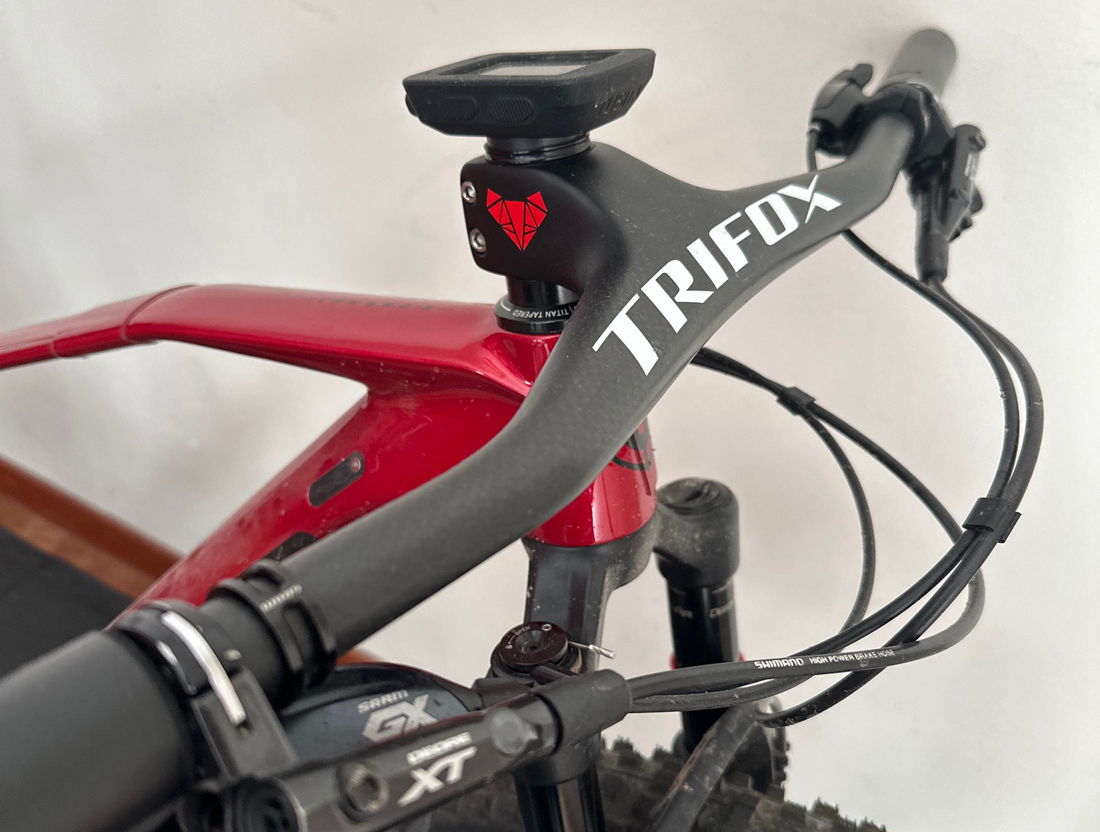
Mountain biking is all about performance, and every aspect of your bike can make a difference—whether it’s your tire choice, frame design, or the handlebars that you use. Aerodynamic handlebars, such as those found in cutting-edge MTB designs, are an often overlooked but powerful component in optimizing your ride. But how exactly can these handlebars improve your MTB performance? Let’s explore the benefits. 1. Reduced Air Resistance for Faster Rides Aerodynamic handlebars are designed to minimize drag, the resistance caused by air friction. On the trail, especially at higher speeds, every little bit of drag counts. By reducing wind resistance, aerodynamic handlebars allow riders to conserve energy and maintain higher speeds with less effort. This is particularly beneficial on flat sections of the trail or during fast descents, where maintaining speed is crucial. A sleek, integrated design reduces the surface area exposed to wind, helping you cut through the air more efficiently. For example, the **Trifox Carbon Integrated Handlebar RHB200**, made of high-quality carbon fiber, not only reduces drag but also integrates the stem and handlebar into a single unit. This creates a seamless design that eliminates the gaps and bulges typically found in traditional setups, further improving aerodynamics. 2. Improved Handling and Stability Aerodynamic handlebars aren’t just about reducing air resistance—they also contribute to better handling and stability, which is vital for off-road riding. Many modern aerodynamic handlebars have a more ergonomic shape, offering a better grip and more control over the bike, especially when navigating rough terrain. The streamlined design also reduces weight, making the bike feel more responsive and agile. The Trifox RHB200 features a compact, lightweight design that enhances control while riding through technical sections. Less weight means less inertia, allowing you to respond quicker to changes in terrain or obstacles, improving overall stability and comfort on the trail. 3. Enhanced Comfort on Long Rides Long-distance riders know how much comfort matters. Aerodynamic handlebars like the **Trifox Carbon Integrated Handlebar RHB200** are designed to reduce the strain on your arms and shoulders, which can be especially important during longer rides. The ergonomic shape of the handlebars allows for a more natural hand position, helping to reduce fatigue over time. The lighter weight of carbon fiber also means less effort to keep the bike steady, which is crucial when spending hours in the saddle. For mountain bikers who are tackling challenging trails or going for endurance rides, comfort is key to maintaining performance. With aerodynamic handlebars, you can ride longer without feeling the aches and pains that come with subpar handlebars. 4.Increased Durability and Strength Many high-end aerodynamic handlebars are made from carbon fiber, known for its combination of lightweight properties and high durability. Not only does this material contribute to a better aerodynamic profile, but it also enhances the strength and longevity of the handlebars. For mountain bikers who push their bikes to the limit on rugged trails, durability is a must. The Trifox RHB200 is a prime example of how advanced materials and engineering can create a handlebar that is both aerodynamic and highly durable. The carbon construction can withstand rough handling and impacts, ensuring that the handlebars maintain their integrity throughout countless rides. Conclusion Aerodynamic handlebars, such as the Trifox Carbon Integrated Handlebar RHB200, offer more than just a sleek look. They can significantly improve your MTB performance by reducing air resistance, improving handling and stability, enhancing comfort, and providing long-lasting durability. Whether you're chasing speed on flat stretches or navigating technical terrain, these handlebars offer the edge you need to enhance your riding experience. For serious mountain bikers looking to optimize their setup, switching to aerodynamic handlebars is an investment that can pay off in spades.
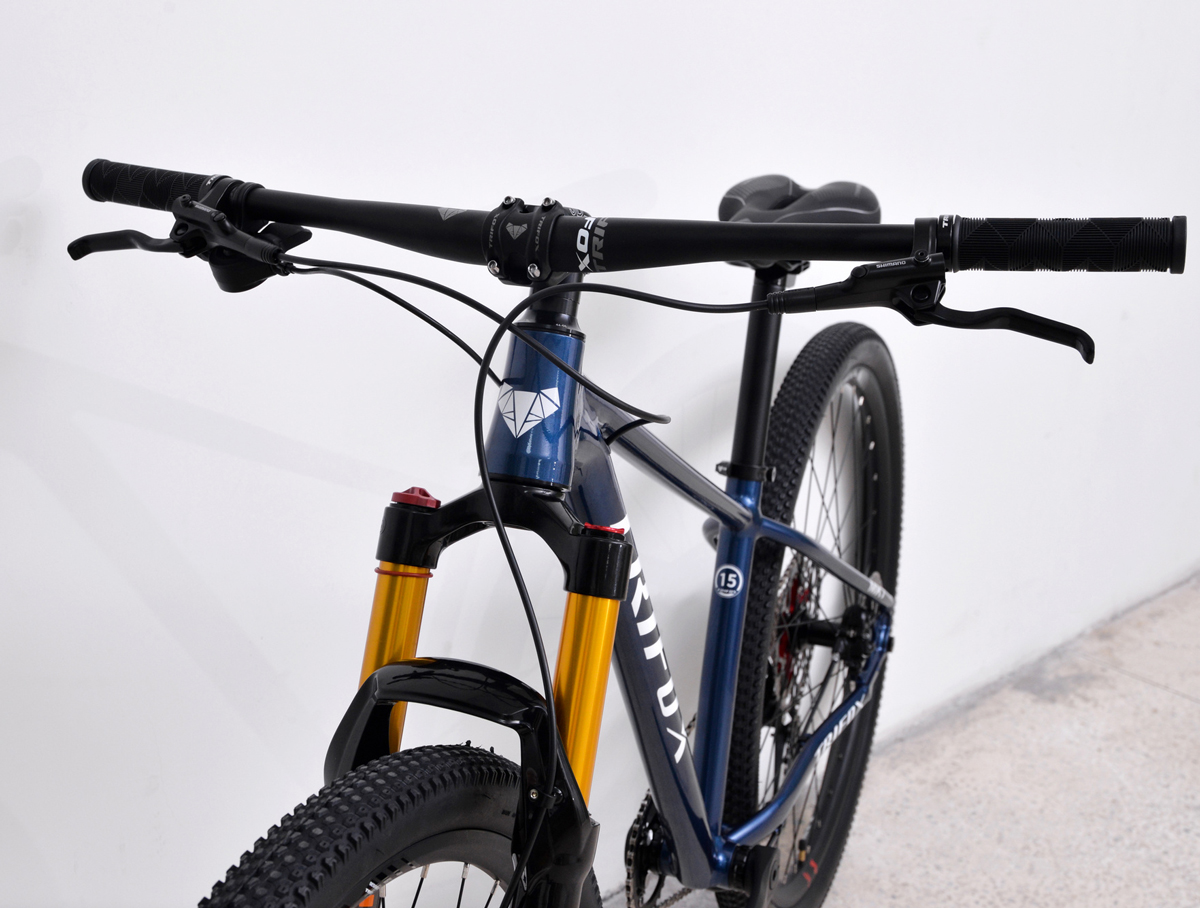
When it comes to mountain biking, having the right bike for the terrain is essential for both performance and enjoyment. Among the many choices available, the PeakTrail Xtreme MK7 Aluminum Mountain Bike stands out as a top contender for trail enthusiasts. This bike, designed for rugged terrain and built to withstand the toughest trails, offers a combination of lightweight durability, smooth handling, and advanced features that set it apart from other trail bikes. 1. Lightweight Yet Durable Aluminum Frame One of the standout features of the PeakTrail Xtreme is its aluminum frame, which strikes the perfect balance between strength and weight. While many high-performance mountain bikes use heavier steel or more expensive carbon fiber frames, the aluminum frame of the PeakTrail Xtreme MK7 offers exceptional durability without adding unnecessary weight. This makes it easier to tackle steep climbs and challenging terrains without being weighed down. The aluminum construction also means the bike is highly resistant to corrosion, ensuring that it can handle the elements and continue to perform season after season, whether you’re riding through muddy trails, wet conditions, or rocky surfaces. For riders looking for a bike that delivers both power and agility, the PeakTrail Xtreme’s lightweight design allows for faster acceleration and greater maneuverability, giving you a competitive edge on technical sections and tight corners. 2. Advanced Suspension for Smooth Rides Mountain biking often involves tackling rough, uneven trails, and the PeakTrail Xtreme is equipped with an advanced suspension system that absorbs shocks and provides a smoother, more comfortable ride. With a front suspension fork designed to cushion impacts from bumps, rocks, and roots, the bike is optimized for trail riding. This suspension system is particularly beneficial when you encounter rocky or root-heavy trails, as it absorbs the vibrations and helps you maintain control. While many trail bikes may only have basic suspension systems, the PeakTrail Xtreme ensures that every ride, whether uphill or downhill, remains comfortable and controlled, even on challenging terrain. This is essential for maintaining stability and confidence while riding through technical sections, making it easier to focus on your performance rather than worrying about discomfort or lack of control. 3. Superior Handling and Control Control is paramount for mountain bikers, and the PeakTrail Xtreme MK7 excels in this area. The geometry of the bike is specifically designed to offer superior handling, allowing riders to navigate tight turns, rough descents, and uneven terrain with ease. The bike’s geometry provides a stable and responsive ride, enabling better control during technical descents and tight corners. The wide tires on the PeakTrail Xtreme further enhance grip, improving traction on slippery or rocky trails. This allows for better control when navigating steep slopes or loose gravel, so you can confidently take on obstacles without worrying about losing grip or stability. Whether you’re riding through switchbacks or descending from a mountain trail, the PeakTrail Xtreme provides the level of control that ensures you’re always in charge, regardless of the conditions. 4. Versatile Components for a Range of Terrains The PeakTrail Xtreme is designed to handle a wide range of terrains, from smooth, fast-flowing trails to rugged, technical tracks. The bike is equipped with high-quality components that improve performance across different terrains. This includes an efficient gear system that allows for smooth shifting, helping you power through climbs and keep up speed on flat sections. Additionally, the strong, reliable brakes give riders confidence on downhill runs, ensuring you can stop quickly and safely when navigating tricky sections. The combination of components ensures that the PeakTrail Xtreme is versatile enough for different riders, from beginners to more experienced bikers, and can be trusted in various riding conditions. 5. Durability for Long-Term Use Mountain biking can be demanding on both the rider and the bike, but the PeakTrail Xtreme MK7 is built to endure. Thanks to its durable aluminum frame and rugged components, this bike can handle frequent use, from aggressive trail riding to weekend adventures. The reinforced parts are designed to stand up to the harsh conditions of off-road cycling, including mud, dirt, water, and rocks. For serious mountain bikers, durability is key—no one wants to invest in a bike that will break down after a few rides. The PeakTrail Xtreme provides long-term performance, allowing riders to take on challenging trails without worrying abohigh-performance trail bikes come with a steep price tag, the PeakTrail Xtreme MK7 offers exceptional value for money. By using aluminum for the frame and combining it with reliable suspension and components, this bike delivers solid performance without breaking the bank. For riders who want a durable, high-performing bike without paying for top-tier carbon frames or overly expensive designs, the PeakTrail Xtreme offers an excellent balance of quality and affordability The PeakTrail Xtreme MK7 Aluminum Mountain Bike is a standout choice for anyone looking to take their trail riding to the next level. Its lightweight yet durable aluminum frame, advanced suspension system, superior handling, and reliable components make it a top contender in the mountain biking world. Whether you’re a beginner looking for a versatile bike to tackle different trails or an experienced rider who demands control and performance, the PeakTrail Xtreme offers the perfect combination of durability, speed, and comfort to make every ride an adventure. 文字
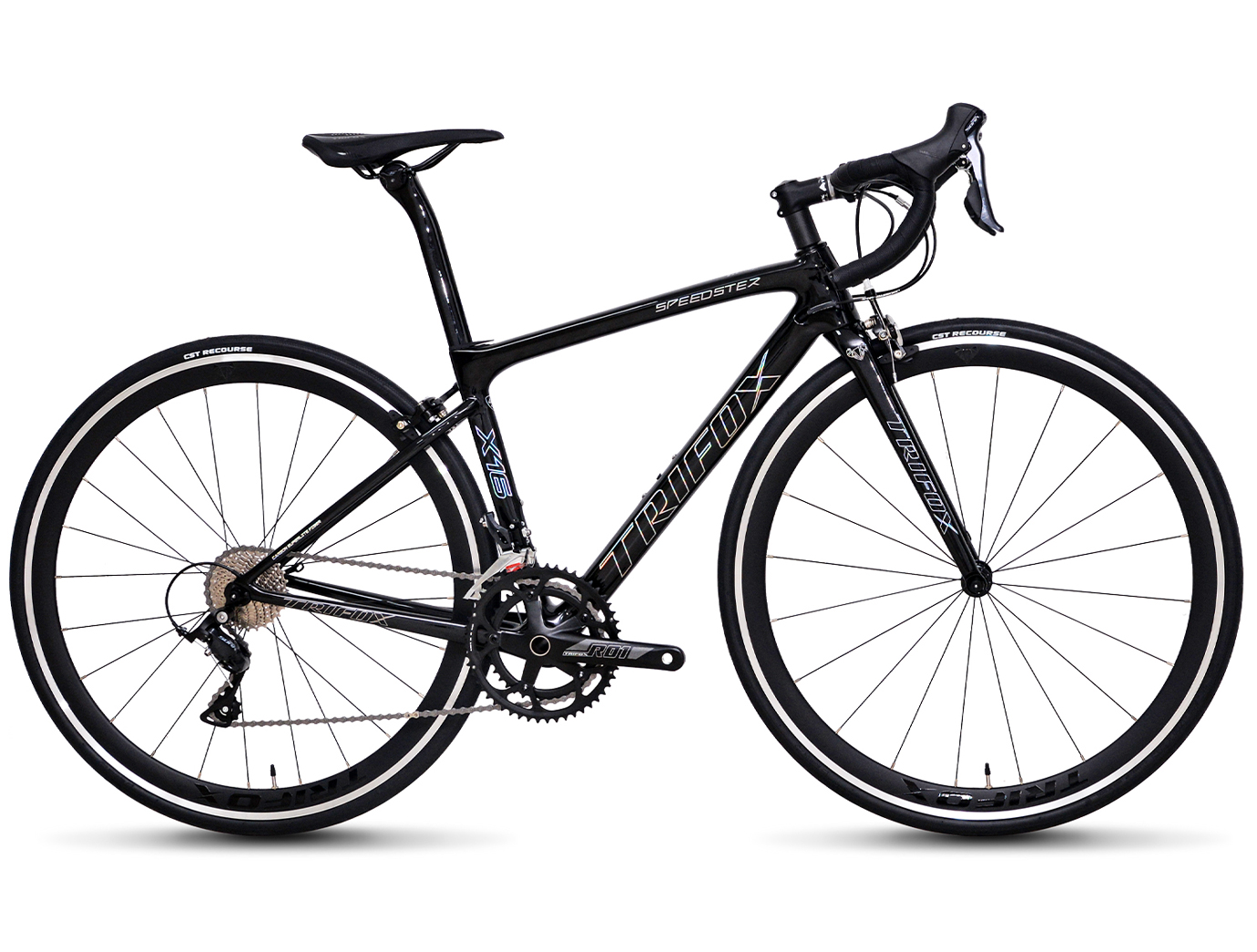
When it comes to cycling, performance is often about the combination of factors like speed, endurance, and efficiency. One of the most noticeable trends among serious cyclists is the pursuit of lighter bikes. An ultra-light road bike has become the ultimate goal for many enthusiasts and competitive riders, promising faster speeds, better climbing ability, and more responsive handling. But can a bike that’s ultra-light really make a tangible difference in your cycling performance? Let’s dive into why a 700C ultralight carbon fiber frame road bike, like the Trifox 700C with Shimano Tiagra R4700 2x10-speed system, can enhance your cycling experience. 1. Improved Speed and Acceleration One of the most significant benefits of an ultra-light road bike is its ability to accelerate faster. The weight of a bike has a direct impact on how much effort is required to get it moving, especially when you’re trying to reach high speeds or make quick sprints. A lightweight bike reduces the mass that the rider needs to propel forward, allowing for quicker accelerations, particularly on flat roads or during the initial takeoff from a stop. The Trifox ultralight carbon fiber frame offers exceptional stiffness-to-weight ratio. This means that less energy is lost in flex, and more of your pedal power is transferred directly into forward motion. Whether you’re racing, sprinting, or just riding for fitness, an ultra-light road bike will help you achieve your goals faster and more efficiently. 2. Better Climbing Performance When climbing steep hills, weight becomes one of the most critical factors in performance. A lighter bike means less mass to carry uphill, reducing the effort needed to maintain a consistent pace during a climb. For serious cyclists, every kilogram saved can have a noticeable impact on climbing times and overall endurance. The Trifox 700C ultralight carbon fiber frame is designed with performance climbing in mind. Thanks to the carbon construction, it’s not just light but also incredibly stiff, allowing for more responsive handling as you shift gears and power through difficult terrain. The carbon material also absorbs road vibrations, ensuring that your body doesn’t wear out prematurely, which is especially useful during longer ascents or on rougher surfaces. 3. Increased Efficiency and Power Transfer A road bike that is ultra-light typically boasts a frame made from materials that are both strong and stiff. Carbon fiber, found in the Trifox 700C, offers a superior strength-to-weight ratio, providing riders with an efficient, responsive ride. When you push on the pedals, the energy you generate is transferred directly into forward motion, rather than being absorbed by the bike’s frame. With a lightweight and stiff frame, the Trifox 700C ensures minimal flex, which means more of your energy is utilized to propel the bike forward. This type of efficient power transfer makes a huge difference, particularly during high-intensity efforts like sprinting or time trials, where maximizing every pedal stroke counts. 4. Responsive Handling and Cornering Another benefit of an ultra-light bike is improved handling, particularly when maneuvering through corners or tight spaces. The Trifox 700C carbon fiber frame provides a sharp and responsive feel, which is ideal for riders who push the limits of their bike’s handling capabilities. When a bike is lighter and more responsive, it requires less effort to change direction or navigate through technical sections, such as curves or obstacles in a race or trail. For cyclists who value control and agility in their rides, an ultra-light bike ensures that your bike responds exactly how you want it to, whether you’re taking sharp corners in a race or riding on winding roads. 5. Enhanced Comfort and Reduced Fatigue A lighter bike doesn’t just offer performance gains—it can also improve comfort, especially on long rides. The Trifox 700C ultralight carbon fiber frame features vibration-damping properties that help absorb road shocks, reducing the strain on your body during extended rides. Less weight in the bike means less strain on the rider, particularly in the arms, legs, and back. Additionally, the frame’s ability to absorb some of the road vibrations helps reduce overall fatigue, allowing cyclists to ride longer distances without feeling as worn out. This is particularly useful for long races or endurance events where conserving energy is crucial. 6. The Cost-to-Performance Ratio While ultra-light bikes like the Trifox 700C with its Shimano Tiagra R4700 2x10-speed system are designed for high performance, they also offer a solid cost-to-performance ratio compared to more expensive models. Carbon fiber frames, while pricier than aluminum, provide top-tier performance without the extreme price tag associated with premium carbon models. For riders who want to boost their cycling performance without emptying their wallets, the Trifox 700C ultralight road bike provides exceptional value for the price. An ultra-light road bike like the Trifox 700C can certainly enhance your cycling performance in several meaningful ways. From better acceleration and climbing performance to improved power transfer, handling, and comfort, the benefits are clear. While weight is not the only factor that determines cycling performance, an ultra-light bike ensures that you can ride faster, longer, and more efficiently. For cyclists who are serious about improving their performance, the Trifox 700C ultralight carbon fiber road bike offers a high-performance solution that delivers on all fronts. Whether you’re racing, training, or simply enjoying the ride, an ultra-light bike can make a noticeable difference in your cycling experience.

When it comes to competitive cycling, the bike you ride can make all the difference between victory and defeat. For serious racers, selecting the right bike is about more than just brand reputation—it’s about performance, weight, aerodynamics, and durability. The T800 carbon fiber racing bike, like the Trifox 700C Ultralight Carbon Fiber Road Bike, is designed with all these factors in mind, making it the ultimate choice for cyclists who demand nothing less than peak performance. In this blog post, we’ll explore why this bike, with its T800 carbon fiber frame, advanced features, and race-ready design, is a top choice for serious racers. 1. Lightweight Carbon Fiber Frame for Maximum Speed The core advantage of the T800 carbon fiber frame is its impressive lightness without sacrificing strength. Carbon fiber is renowned for being incredibly light yet exceptionally strong and stiff, which translates to faster speeds and more efficient power transfer. In racing, every gram saved is a step closer to achieving your personal best. Compared to traditional aluminum or steel frames, the T800 carbon fiber construction ensures that the bike remains ultra-light while still offering superior stiffness. This stiffness helps maximize pedaling efficiency by ensuring that every watt of energy put into the pedals is transferred directly to the road, rather than being absorbed by the frame. For serious racers, this means faster accelerations, better climbing, and improved overall performance. 2. Aerodynamics for Faster Rides Aerodynamics are crucial for any racing bike, and the T800 carbon fiber racing bike is designed with this in mind. Its aerodynamic frame geometry reduces drag, helping riders maintain higher speeds with less effort. The streamlined design minimizes air resistance, allowing racers to cut through the wind more efficiently, especially during sprints and time trials. The carbon fiber frame allows for smooth, sleek lines that reduce turbulence around the bike, giving you an edge over riders using less aerodynamically optimized machines. Whether you’re on the flat roads of a criterium or speeding down the straights in a time trial, the aerodynamic advantages of the T800 carbon frame can make a noticeable difference in your overall performance. 3. Stiffness and Power Transfer for Optimal Performance The Trifox 700C ultralight carbon fiber road bike is built with precision and stiffness in all the right places. While the frame is designed to be lightweight, it does not compromise on rigidity. In a racing environment, where every second matters, power transfer is critical. The T800 carbon fiber frame ensures that as soon as you push down on the pedals, all of that power goes directly into forward motion, rather than being lost in the flex of the frame. This enhanced stiffness is particularly noticeable during high-intensity efforts, such as climbing steep hills or sprinting to the finish line. When you need the bike to respond quickly and efficiently to your efforts, the T800 carbon fiber frame provides just that. 4. Advanced Disc Brake System for Superior Control Equipped with an S-Ride 2x11-speed groupset and disc brakes, the T800 carbon fiber racing bike delivers superior control and stopping power, even in challenging conditions. Disc brakes offer several advantages over traditional rim brakes, including better performance in wet or muddy conditions, more consistent braking power, and greater control during high-speed descents. For serious racers, the ability to brake confidently without worrying about weather conditions is invaluable. Whether you’re navigating tight corners during a race or descending at high speeds, the disc brake system provides precise control and safety, allowing you to ride with confidence and focus on the race ahead. 5. Durability for Long-Term Racing While lightweight and performance-oriented, the T800 carbon fiber frame is also designed with durability in mind. Carbon fiber, particularly the T800 grade, is known for its ability to withstand the stresses of racing while remaining strong and resilient over time. The frame’s ability to absorb road vibrations helps reduce fatigue during long races, contributing to better comfort and performance over extended periods. Additionally, the Trifox 700C road bike features high-quality components, such as the 2x11-speed groupset, ensuring that the bike remains reliable and smooth for many seasons of racing and training. 6. Cost-to-Performance Ratio While the T800 carbon fiber racing bike may come with a higher price tag than entry-level models, its performance benefits make it an excellent value for serious racers. When you consider the advanced materials, superior aerodynamics, and durable components, the cost-to-performance ratio becomes more than reasonable. For competitive cyclists who want to give themselves every advantage on race day, investing in a top-tier carbon fiber bike like the Trifox 700C ultralight ensures that you’re getting the best possible tool for the job. Conclusion The T800 carbon fiber racing bike is designed to meet the demands of the most serious cyclists, offering unmatched performance, lightweight construction, and superior aerodynamics. Whether you’re racing in a high-stakes event or pushing yourself to improve your personal best, the T800 carbon frame provides the responsiveness, stiffness, and efficiency you need to excel. Combined with cutting-edge features like disc brakes and a precision 2x11-speed groupset, it’s clear why this bike is considered the ultimate choice for serious racers. If you’re looking to take your racing to the next level, the T800 carbon fiber bike will be your trusted companion in every race.
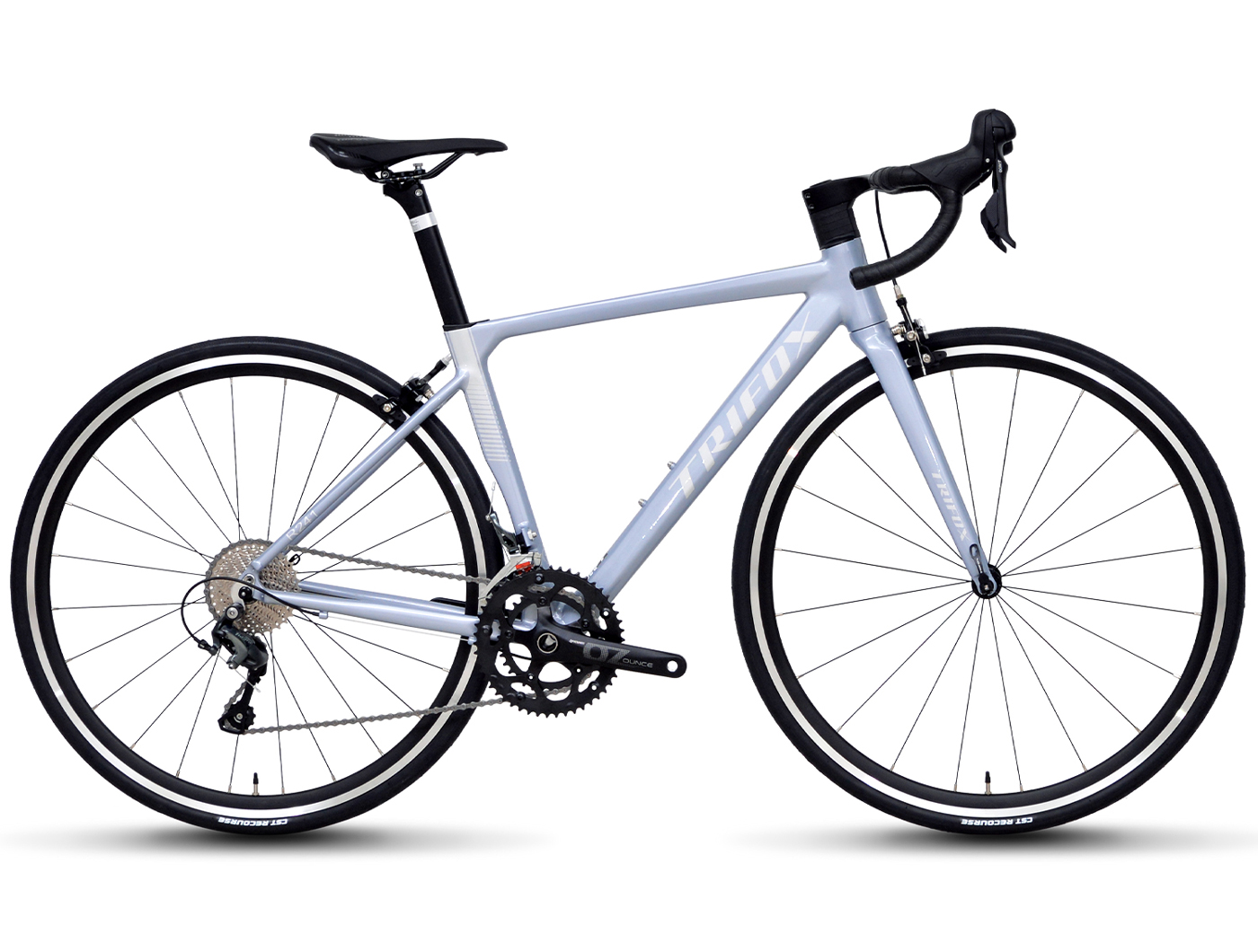
When choosing a road bike, speed enthusiasts and competitive cyclists often consider performance models that offer a balance of speed, efficiency, and comfort. Among these options, the 10-speed aero road bike stands out as a popular choice for those looking to maximize performance without breaking the bank. But how does a 10-speed aero road bike compare to other high-performance models? Let’s take a closer look at its features, advantages, and limitations to help you decide if it’s the right fit for your cycling needs. 1. The Gear Advantage: 10-Speed vs. Other Configurations A 10-speed drivetrain, like the Shimano Tiagra R4700 found on the Trifox 2024 C-Brake Road Bike, offers a solid combination of reliability and performance. While 11- and 12-speed systems provide more gears, the 10-speed configuration strikes a balance that appeals to many riders. The main advantage of a 10-speed setup is its simplicity. With fewer gears, the system is easier to maintain and less prone to wear and tear. This makes it an excellent choice for riders who want performance without the added complexity of higher-speed drivetrains. While it may not have the micro-adjustments of an 11-speed system, a 10-speed drivetrain still provides sufficient range for most terrains, from flat stretches to moderate climbs. 2. Aerodynamics: A Key to Speed The defining feature of any aero road bike is its frame design, optimized to reduce drag and increase speed. The Trifox 2024 model, for instance, features an ultralight aluminum frame, which combines aerodynamic shaping with durability and lightweight performance. Compared to non-aero models, an aero bike allows riders to maintain higher speeds with less effort, particularly on flat and rolling terrains. While other performance bikes may focus on weight reduction for climbing or versatility for all-road conditions, aero road bikes are specifically tailored for speed. This makes them ideal for riders who prioritize fast sprints, time trials, and efficient power transfer on smoother roads. 3. Weight and Materials The Trifox 2024 10-speed road bike utilizes an aluminum frame, which strikes a balance between weight, strength, and affordability. While carbon fiber frames found in higher-end models may be lighter, aluminum remains a competitive choice for cyclists who want durability without significantly increasing the bike’s overall weight. In comparison to heavier steel-framed bikes or more affordable entry-level options, the ultralight aluminum frame ensures that the bike feels agile and responsive, especially during accelerations and climbs. 4. Braking Systems: Caliper vs. Disc This 10-speed aero road bike is equipped with C-brakes (caliper brakes), which offer reliable stopping power on dry roads and are lighter than disc brakes. While disc brakes are increasingly popular on higher-end models for their superior performance in wet conditions, caliper brakes remain a favorite for road cyclists seeking to minimize weight and maintain the classic road bike aesthetic. For performance-focused riders who primarily cycle in dry conditions, the weight savings and streamlined design of C-brakes can be a significant advantage. 5. Cost-to-Performance Ratio One of the standout features of a 10-speed aero road bike is its affordability compared to 11- or 12-speed models. While higher-end bikes may offer marginal gains in gear range and weight reduction, the cost difference is often significant. A 10-speed aero road bike like the Trifox 2024 delivers excellent performance for speed enthusiasts without the premium price tag, making it an attractive option for cyclists who want competitive features on a budget. Conclusion A 10-speed aero road bike strikes an impressive balance between performance, simplicity, and cost-effectiveness. While it may not have the gear range or ultralight materials of higher-end models, its aerodynamic design, lightweight aluminum frame, and reliable Shimano drivetrain make it a strong contender for speed-focused cyclists. Whether you’re looking to improve your average speed, tackle local races, or enjoy high-performance rides, the 10-speed aero road bike offers plenty of value and versatility for a wide range of riders.
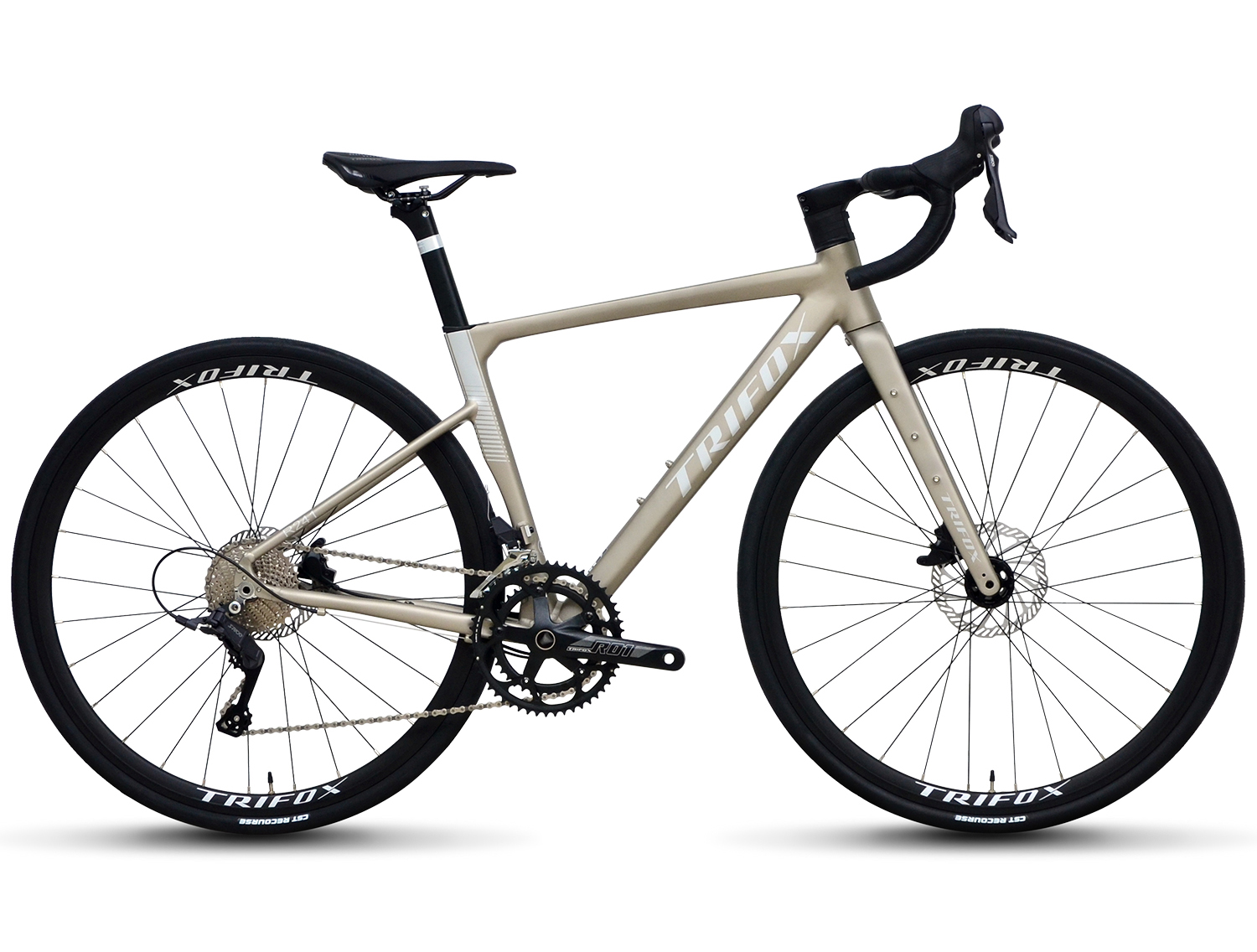
For cycling enthusiasts and competitive riders, the quest for speed is an ongoing challenge. Every part of the bike contributes to the overall performance, from the frame material to the gearing system. Among the most popular choices for speed-focused cyclists is the 11-speed aero road bike. These bikes promise improved aerodynamics, faster shifting, and a more efficient ride, but the question remains: is an 11-speed aero road bike worth the investment for those who are serious about speed? 1. Precision Shifting and Gear Range One of the most significant upgrades you get with an 11-speed system is the increased gear range and smoother, faster shifting. Compared to a 10-speed bike, an 11-speed drivetrain allows for more closely spaced gears. This means you can make finer adjustments in your cadence, ensuring that you always find the perfect gear to optimize your pedaling efficiency—whether you're powering through flat stretches or tackling a challenging climb. The added gears also give you a broader range, helping to maintain speed on varying terrains. For speed enthusiasts, having the ability to fine-tune your gear selection in response to changes in gradient or wind conditions is a huge advantage. In races or time trials where every second counts, this level of precision can make the difference between a podium finish and an also-ran result. 2. Aerodynamics and Speed An aero road bike is designed with one goal in mind: speed. The frame geometry is optimized to reduce drag, and the bike’s overall design helps the rider achieve a more aerodynamic position. Combined with the 11-speed drivetrain, which allows for more efficient power transfer, an aero road bike helps cyclists maintain higher speeds with less energy. The Trifox 2024 R241, for example, features a carbon fork and aluminum frame, a combination that delivers both aerodynamics and durability without sacrificing weight. The lighter frame, combined with the aerodynamic design, reduces wind resistance, allowing cyclists to achieve faster speeds with less effort. For speed enthusiasts, this means that you can ride faster, use less energy, and maintain high speeds over longer distances. 3. Better Control with Disc Brakes In addition to the performance benefits of the 11-speed system, modern aero road bikes like the Trifox R241 come equipped with disc brakes. Disc brakes provide superior stopping power, especially in wet or variable conditions, allowing for better control at high speeds. For speed enthusiasts, having the confidence to brake effectively—without compromising safety or control—is crucial when navigating downhill stretches or tight corners during competitive events. When you're pushing your bike to its limits, knowing that your braking system can handle the demands of high-speed riding offers peace of mind, ensuring you can focus on performance without worrying about safety concerns. 4. Enhanced Durability and Performance Over Long Distances While the initial investment in an 11-speed aero road bike may seem steep, these bikes are built for durability. The quality of materials, such as the aluminum frame and carbon fork found in the Trifox R241, is designed to withstand the demands of long-distance rides, high-speed sprints, and tough training sessions. Aero bikes are engineered for riders who are pushing their limits, and these frames can handle the stress of aggressive riding. Moreover, the S-Ride 2x11-speed groupset offers smooth, responsive performance over time, even as it experiences wear and tear. The added durability ensures that you're not just buying a bike for today but investing in a machine that will serve you well through many seasons of racing and training. 5. The Cost-to-Performance Ratio One of the key considerations when purchasing any high-performance bike is the cost-to-performance ratio. While an 11-speed aero road bike like the Trifox R241 may come at a premium price compared to entry-level models, the performance gains in terms of speed, efficiency, and aerodynamics make it a worthwhile investment for serious cyclists. If speed is your top priority, the precision and control offered by an 11-speed system can significantly enhance your overall riding experience. For speed enthusiasts, the ability to gain an edge in both training and competition can justify the investment. When you factor in the long-term durability and the advanced features like disc brakes and aerodynamic frame design, an 11-speed aero road bike offers both performance and value. Conclusion If you’re a speed enthusiast looking to elevate your riding experience, the 11-speed aero road bike is definitely worth the investment. With benefits like precision shifting, superior aerodynamics, better braking performance, and long-term durability, this bike type is built to optimize every ride. Whether you’re a competitive cyclist or a recreational rider aiming for higher speeds, a well-designed aero road bike like the Trifox R241 can help you achieve your goals while providing a thrilling and efficient ride.
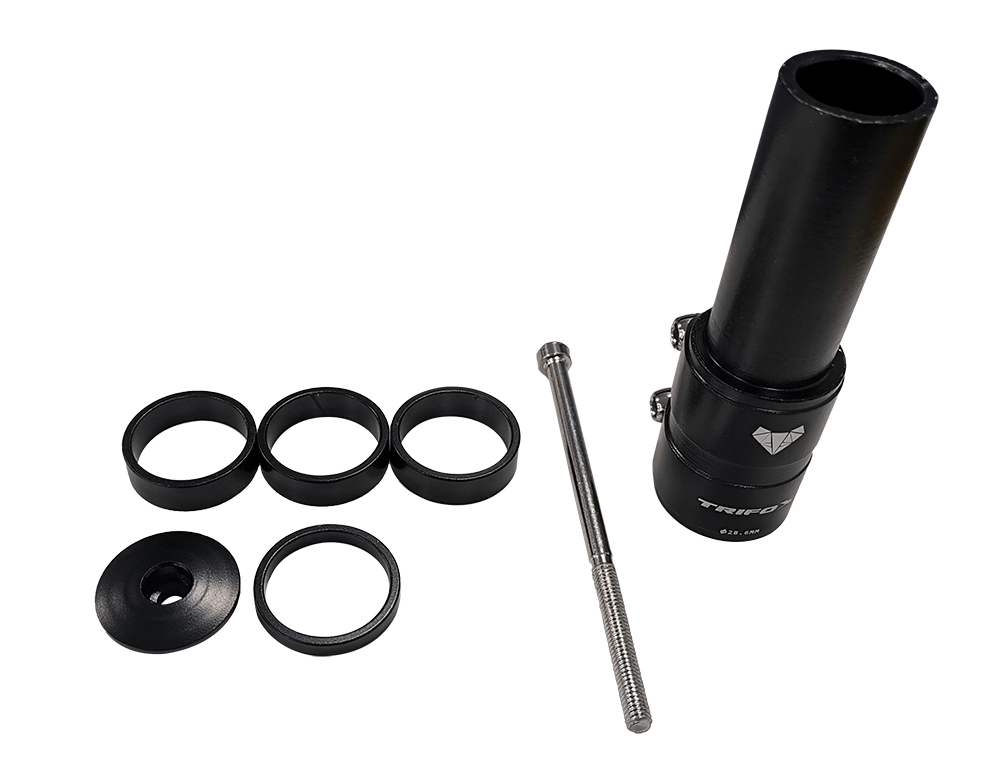
Bike spacers may seem like small, insignificant components, but they play a crucial role in optimizing your cycling setup. These simple rings, typically made of aluminum or carbon, are installed on the headset of your bike, between the stem and the frame’s steering tube. Though often overlooked, spacers can significantly affect your comfort, performance, and overall riding experience. 1. Adjusting Handlebar Height One of the main purposes of bike spacers is to adjust the height of your handlebars. By adding or removing spacers, you can fine-tune the positioning of your handlebars to achieve the most comfortable riding posture. Raising the handlebars using spacers promotes a more upright riding position, which is ideal for comfort on long rides or for cyclists with back or neck issues. Conversely, lowering the handlebars can put you in a more aggressive, aerodynamic position, perfect for racing or when looking to reduce wind resistance. 2. Personalizing Fit Every rider is different, and getting the right fit is crucial for performance and comfort. Spacers offer an easy and cost-effective way to make subtle adjustments to the fit of your bike without needing to purchase a new stem. This flexibility is particularly useful during bike fitting sessions, where small adjustments can have a big impact on your riding experience. Spacers allow you to find a setup that feels just right, whether you're a recreational rider or a competitive cyclist. 3. Ensuring Frame and Stem Compatibility Spacers can also help ensure that your stem and frame are compatible in terms of stack height. For bikes with frames that have a shorter head tube, spacers can make up the difference and allow for a more ergonomic fit. This also ensures that your stem can be properly mounted and that the handlebars are in the right position for optimal control. 4. Improving Handling and Control By adjusting the height of your handlebars with spacers, you can enhance bike handling and control. A higher handlebar position can improve your leverage and make it easier to steer, particularly on technical terrain or in city commuting situations. A lower handlebar position, on the other hand, can improve stability and responsiveness at high speeds, offering better handling during descents or cornering. While small in size, bike spacers are an essential component in creating a customized and comfortable ride. Whether you’re adjusting handlebar height, personalizing fit, or improving bike handling, spacers give you the flexibility to fine-tune your setup for maximum performance. When paired with the right stem parts, they ensure that your bike is perfectly tailored to your unique riding style and needs. Explore Trifox’s collection of stem parts and accessories to enhance your cycling experience today!
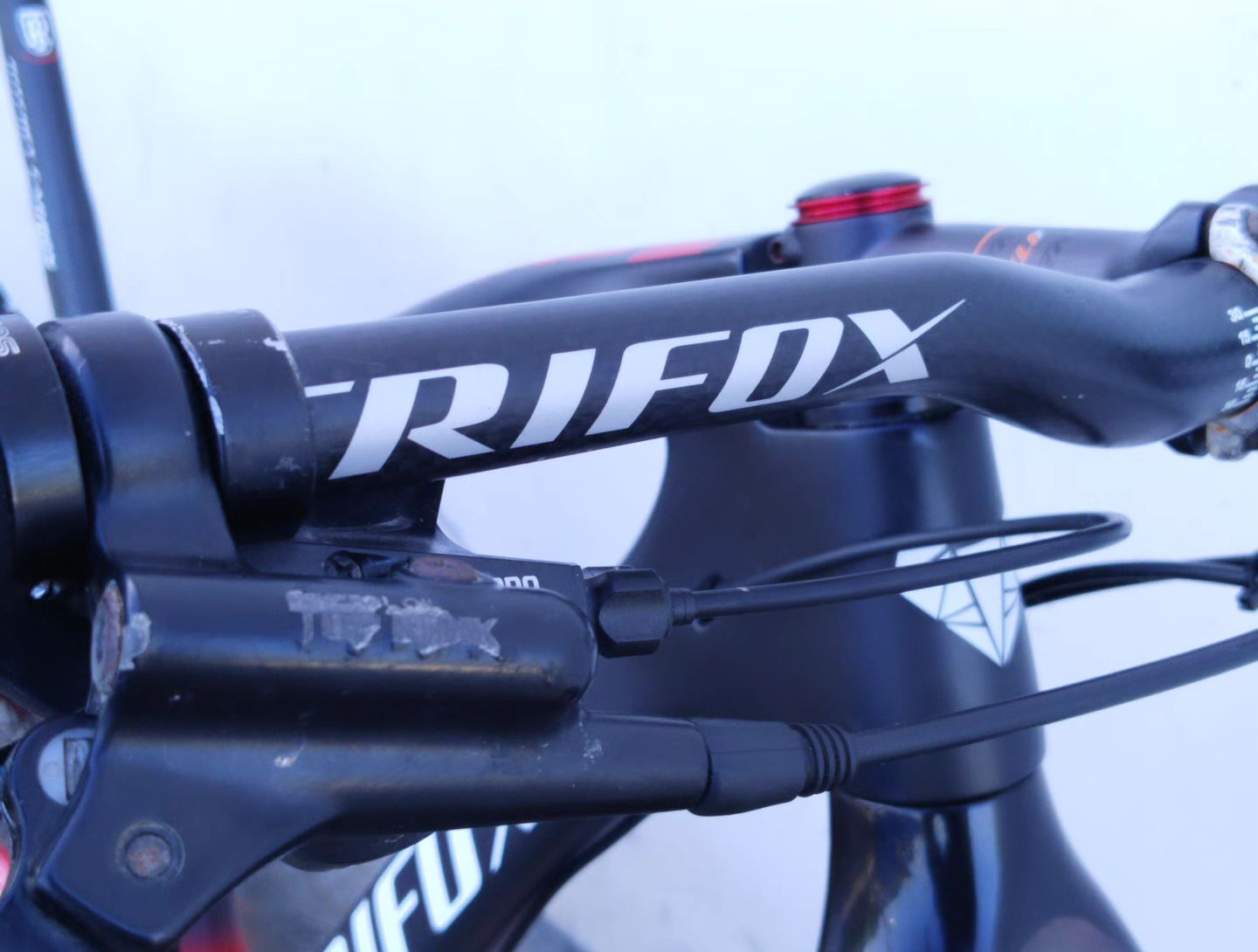
When it comes to optimizing your cycling experience, the right handlebars play a critical role in enhancing both performance and comfort. The design and shape of handlebars affect your posture, control, and overall efficiency, which is why selecting the right type for your riding style is key. Whether you're a commuter, an avid mountain biker, or a road racing enthusiast, understanding the advantages of different bike handlebar types can make a world of difference. 1. Drop Bars: Aerodynamics & Versatility Drop bars are the quintessential choice for road bikes, providing an aerodynamic position that allows you to cut through the wind with ease. These handlebars curve downward and forward, allowing the rider to lower their body to reduce air resistance—a critical advantage for competitive cyclists or those who ride long distances at higher speeds. The multiple hand positions offered by drop bars also help reduce fatigue during extended rides, as riders can shift their grip to relieve pressure on different parts of their hands, wrists, and forearms. The ability to ride in a tucked position on the drops, or to sit more upright on the tops, gives riders flexibility for varied riding conditions. Whether you're sprinting on flat roads or tackling a long climb, drop bars provide the comfort and control you need. Best For: Road cyclists, triathletes, long-distance riders, and competitive racers. 2. Flat Bars: Control & Comfort Flat bars are the go-to option for mountain bikes, hybrid bikes, and commuter bikes. Offering a more upright riding position, flat bars improve visibility, making them ideal for urban environments where maneuverability and quick reactions are essential. The straight, level design gives riders more direct control over the bike, which is particularly beneficial for off-road riding where stability is critical. On the road, flat bars help reduce strain on the back, neck, and wrists by encouraging a more natural posture, particularly for cyclists who may not need to adopt an aggressive, aerodynamic position. For beginners or casual riders, flat bars offer comfort and ease, while still delivering the stability needed for more challenging trails. Best For: Mountain bikers, commuters, casual cyclists, and beginners. 3. Riser Bars: Comfort & Better Handling Riser bars are essentially an elevated version of flat bars, with a slight upward bend. This design raises the handlebars, putting the rider in a more relaxed, upright position. This helps reduce pressure on the back and wrists, which is ideal for cyclists who want more comfort on longer rides, particularly on rougher terrain. In addition to comfort, riser bars offer improved handling, especially when navigating technical trails. The extra height allows for better control and leverage when steering, making riser bars a popular choice for trail and mountain bikers who encounter varied terrain, obstacles, and steep descents. Riser bars also provide more space for installing accessories such as lights, bell, or even a bike computer, making them versatile for both casual and serious riders. Best For: Mountain bikers, trail riders, and cyclists who prioritize comfort and control. 4. Bullhorn Bars: Speed & Comfort Hybrid Bullhorn bars blend the aerodynamic benefits of drop bars with the stability and comfort of flat bars. These handlebars curve forward and upward, resembling the shape of a bull’s horns, hence the name. This design gives cyclists the option to adopt a more aggressive position for speed but with additional hand positions for a more relaxed ride. Bullhorn bars are popular in time trial racing and triathlons, where a more streamlined position is advantageous. They are also great for fixed-gear riders or commuters who want an efficient and comfortable setup. The forward curve of bullhorn bars helps reduce wind resistance while maintaining a comfortable grip, making them ideal for long-distance cyclists who want to combine speed with comfort. Best For: Time trialists, triathletes, commuters, and riders looking for a hybrid bar for speed and comfort. 5. Aero Bars: Maximum Aerodynamics for Racing Aero bars are designed to maximize speed by allowing riders to adopt a low, flat position that minimizes wind resistance. Typically used by triathletes and time trial cyclists, aero bars offer a sleek, tucked position that significantly reduces drag, enabling cyclists to ride faster with less effort. They are mounted on top of drop bars and give the rider a place to rest their forearms while holding onto extensions that curve forward. While aero bars are primarily about performance, they can take a toll on long-term comfort. This makes them less suitable for recreational cyclists or those who prefer more relaxed rides. However, for competitive cyclists aiming to optimize their aerodynamics, aero bars are a crucial tool. Best For: Triathletes, time trial riders, and competitive racers looking to maximize speed. 6. Butterfly Bars: Comfort for Touring For long-distance touring cyclists, butterfly bars (also known as trekking bars) are an excellent choice. These bars have a wide, flared design that provides multiple hand positions, ensuring comfort during extended rides. The shape allows riders to switch between a low, aero position and a more relaxed upright posture, which is crucial for maintaining comfort over long distances and varied terrains. The wide grip and versatility of butterfly bars make them ideal for touring bikes, offering a combination of control and comfort for cyclists tackling long multi-day rides. Best For: Touring cyclists and long-distance riders looking for comfort and versatility. Conclusion: Choose the Right Handlebar for Your Riding Style Choosing the right bike handlebar can significantly improve your riding experience, whether you're seeking speed, comfort, or control. From the aerodynamic drop bars of road bikes to the rugged stability of riser bars for mountain biking, there's a handlebar style suited to every cyclist’s needs. Understanding the specific advantages of each type can help you select the one that best complements your riding style, ensuring a smoother, more enjoyable ride. At Trifox, we offer high-performance carbon bike handlebars that cater to a variety of cycling styles, allowing you to optimize your bike setup for maximum comfort and efficiency. Explore our collection today and find the perfect handlebars for your cycling needs.

















